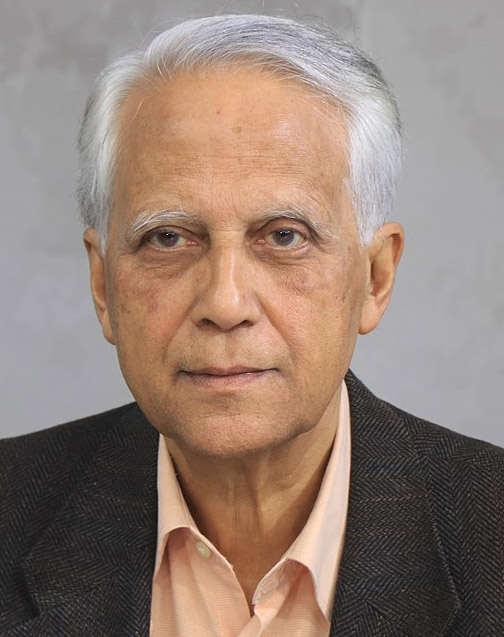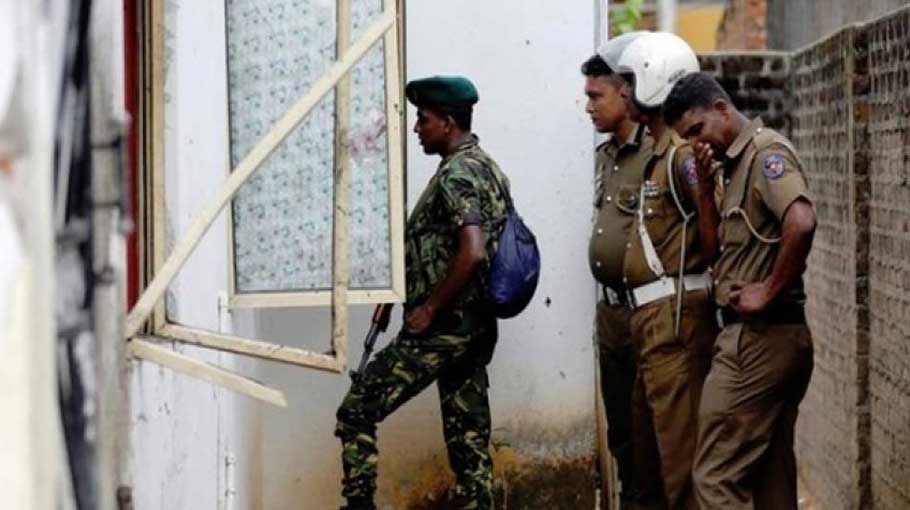Tackling fundamentalism and militancy needs coordinated policy

Terrorism is, in the broadest sense, the use of intentionally indiscriminate violence as a means to create terror among masses of people; or fear to achieve a religious or political aim. It is used in this regard primarily to refer to violence during peacetime or in war against non-combatants –mostly civilians and neutral military personnel. The term terrorism is often used with the connotation of something that is "morally wrong". Governments and non-state groups use the term to abuse or denounce opposing groups. Varied political organizations have been accused of using terrorism to achieve their objectives. These organizations include right-wing and left-wing political organizations, nationalist groups and religious groups. Although legislation declaring terrorism as a crime has been adopted in many states, as yet, there does not appear to be consensus as to whether or not terrorism should be regarded as a war crime.
It may be noted here that in November 2004, a report prepared by the UN Secretary General described terrorism as any act "intended to cause death or serious bodily harm to civilians or non-combatants with the purpose of intimidating a population or compelling a government or an international organization to do or abstain from doing any act". Nevertheless, the international community has been slow to formulate a comprehensive universally agreed, legally binding definition of this crime. The failure to agree appears to originate from difficulties arising from the fact that the term "terrorism" is politically and emotionally charged. The same appears to be true in the context of fundamentalism.
Read more: Jamaat secy general, 8 others remanded in anti-terrorism act case
Nevertheless, it needs to be understood that criminal acts intended or calculated to provoke a state of terror in the public, a group of persons or particular persons for political purposes are unjustifiable, whatever the considerations of a political, philosophical, ideological, racial, ethnic, religious or any other nature that may be invoked to justify them.
At this point one needs to refer to the different kinds of action that are considered today as being part of the terrorism or fundamentalism paradigm. They include-
(a) Political terrorism – this denotes violent criminal behavior designed primarily to generate fear in the community, or substantial segment of it, for political purposes;
(b) Non- political terrorism- malevolent action that is not aimed at political purposes but which exhibits "conscious design to create and maintain a high degree of fear for coercive purposes directed to benefit an individual or collective gain rather than the achievement of a political objective";
© Quasi-terrorism – this includes activities incidental to the commission of crimes of violence that are similar in form and method to genuine terrorism but which lacks its essential ingredient. It is not the main purpose of the quasi-terrorists to induce terror in the immediate victim as in the case of genuine terrorism, but the quasi-terrorist uses the modalities and techniques of the genuine terrorist and produces similar consequences and reaction.
One aspect is however clear with regard to terrorism. Whatever be the connotation, the behavioral typology of internationally terrorism , today, is linked generally to the following causes- social revolution, religious extremism, fundamentalism, sectarianism and extreme right or extreme left beliefs. Another aspect also needs to be accepted. In many cases terrorist attacks take place by a terrorist group to draw international attention to that group. We have seen that happen in the case of Al Qaeda through their attacks on September 11, 2001 on the World Trade Center and the Pentagon in the United States. Currently we have been witness to other different terrorist groups like the IS drawing attention to themselves through militant violent action against civilians.
Analysts have consequently suggested that terrorist organizations do not select terrorism for its political effectiveness. Individual terrorists tend to be motivated more by a desire for social solidarity with other members of their organization than by political platforms or strategic objectives, which are often murky and undefined.
One needs to also refer here to an interesting survey carried out by Paul Gill, John Horgan and Paige Deckert on behalf of The Department of Security of UK. Apparently, 43 percent of lone wolf terrorism is motivated by religious beliefs. The same report indicates that just less than a third (32 percent) have pre-existing mental health disorders, while many are found to have these problems upon arrest. At least 37 percent lived alone at the time of their event planning and/or execution, a further 26 percent lived with others, and no data were available for the remaining cases. 40 percent were unemployed at the time of their arrest or terrorist event. Many were chronically unemployed and consistently struggled to hold any form of employment for a significant amount of time. 19 percent subjectively experienced being disrespected by others, while 14.3 percent experienced being the victim of verbal or physical assault.
Read more: Canadian court rules Iran downing of Ukraine Flight 752 ‘act of terrorism’
Discussion on militancy requires understanding of the term militant. In this context it needs to be understood that a militant, as a noun, is a person who uses militant methods in pursuit of an objective. The term is not associated with the military. In general usage, a militant person or a militant group is confrontational in its approach and displays aggressive behavior or attitude. It is also sometimes used, according to strategic analysts, as a euphemism for terrorist or armed insurgents. However such religious meaning must not be confused with the word belligerent used to describe extremist religious behaviors found in some who, based on their extreme religious beliefs or ideologies, take up weapons and become involved in warfare, or who commit acts of violence or terrorism in an attempt to advance their extremist religious agendas. Such extremist groups can be of Christian, Muslim, Hindu, Buddhist or Jewish religious affiliation. It needs to be understood in this regard that Protocol 1 of the Geneva Conventions does not legitimize attacks on civilians by militants who fall into these categories.
It would however be pertinent to mention here that the UN General Assembly Resolution on terrorism (42/159 of 7 December 1987) which condemns international terrorism and outlines measures to combat the crime, has one proviso: "that nothing in the present resolution could in any way prejudice the right to self-determination, freedom and independence, as derived from the Charter of the United Nations, of peoples forcibly deprived of that right, particularly peoples under racist regimes and foreign occupation.
The above points came up during a recent discussion on terrorist and militant attacks that have been taking place in the recent past in different parts of the world- New Zealand, Sri Lanka, India, Iraq, Afghanistan and Iran. Participants touched on the above facets associated with terrorism and militancy. There were differences of opinion. However there was general agreement that measures need to be taken to tackle these undesirable situations through careful coordinated policy formulation and suitable legislation. This was underlined through the adage- “Prevention is better than cure”.
It was stressed that while developing such a policy, public sentiment, acceptance, religious tolerance, societal norms and behavior towards other members of the community needs to be carefully evaluated to obtain a clearer perspective of the existing situation.In this regard, one needs to understand that there has been a general shift because of digitalization and the widespread use of social media. This in turn has led to a shorter attention span and less interest in reading long texts. Consequently, the regular and traditional method of communicating with the public, regarding any regulatory measure, law, legislation or government decisions, Press Releases, Press Conferences and TV announcements through the official government TV channels also needs to understand that brevity on all matters is important.
There was also general consensus that announcements, news, events and communications through the TV, either through a telecast message or a TV scroll, was considered more trustworthy and authentic by the mass public. The use of broadcast media- radio, FM and Community radio was considered as the second best alternative for communicating a policy decision on counter-terrorism, pertaining to a possible act of terrorism or militancy. The third option was the use of the Print Media and official advertisements in this format. Many pointed out that the Print Media had gained in importance since the introduction of on-line publications and websites.
There was also general consensus that communicating a policy decision on such a delicate subject as –terrorism, militancy or terrorist groups- and measures that need to be taken in this regard could also be taken forward successfully through a more responsible use of the internet and the social media. It was also agreed that communicating a policy decision on these delicate issues could also be facilitated through the use of SMS in mobile phones.
There was also reference not only to the need for prison reform and inmate education to prevent radicalization within the prison but also creating a support structure regarding rehabilitation of those who have been confronted with such a situation.
Another significant factor was also agreed upon. It related to participatory discussion in educational institutions with the youthful population and representatives from different segments of the society, the civil society and cultural and religious cross sections. This approach was particularly proposed not only for urban areas but also in the rural out-reach in different sub-regions of Bangladesh. Such a dialogue could also be transmitted directly on the TV and also through the Broadcast Media. It was felt that this process could be financed through public-private partnership.
This participatory approach would not only add to the civic consciousness about the mal-effects of violence, fundamentalism, terrorism and militancy but would also create the necessary nexus in being able to successfully tackle the osmotic influence of terrorism and militancy.
Muhammad Zamir, a former Ambassador, is an analyst specialized in foreign affairs, right to information and good governance, can be reached at <muhammadzamir0@gmail.com>



